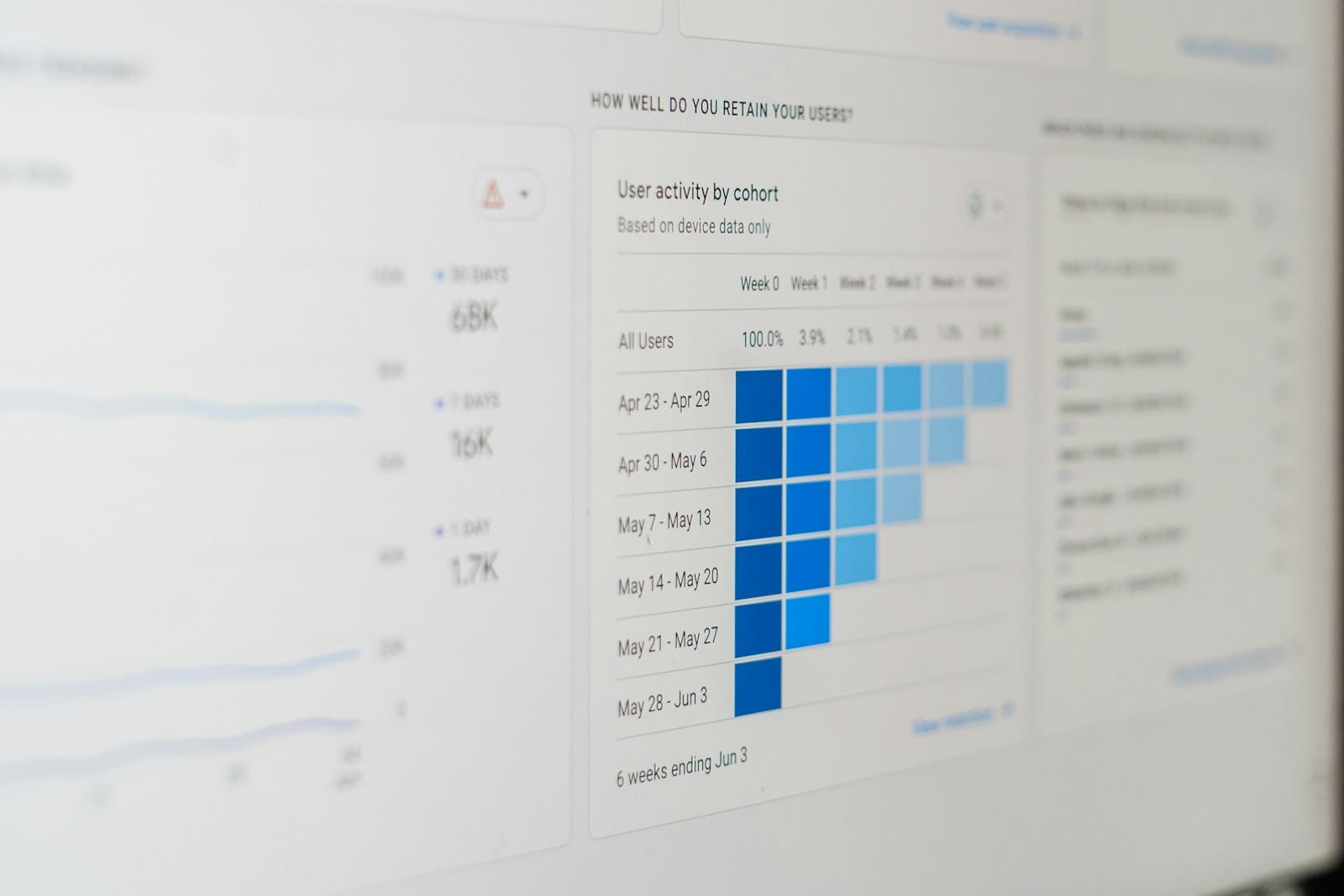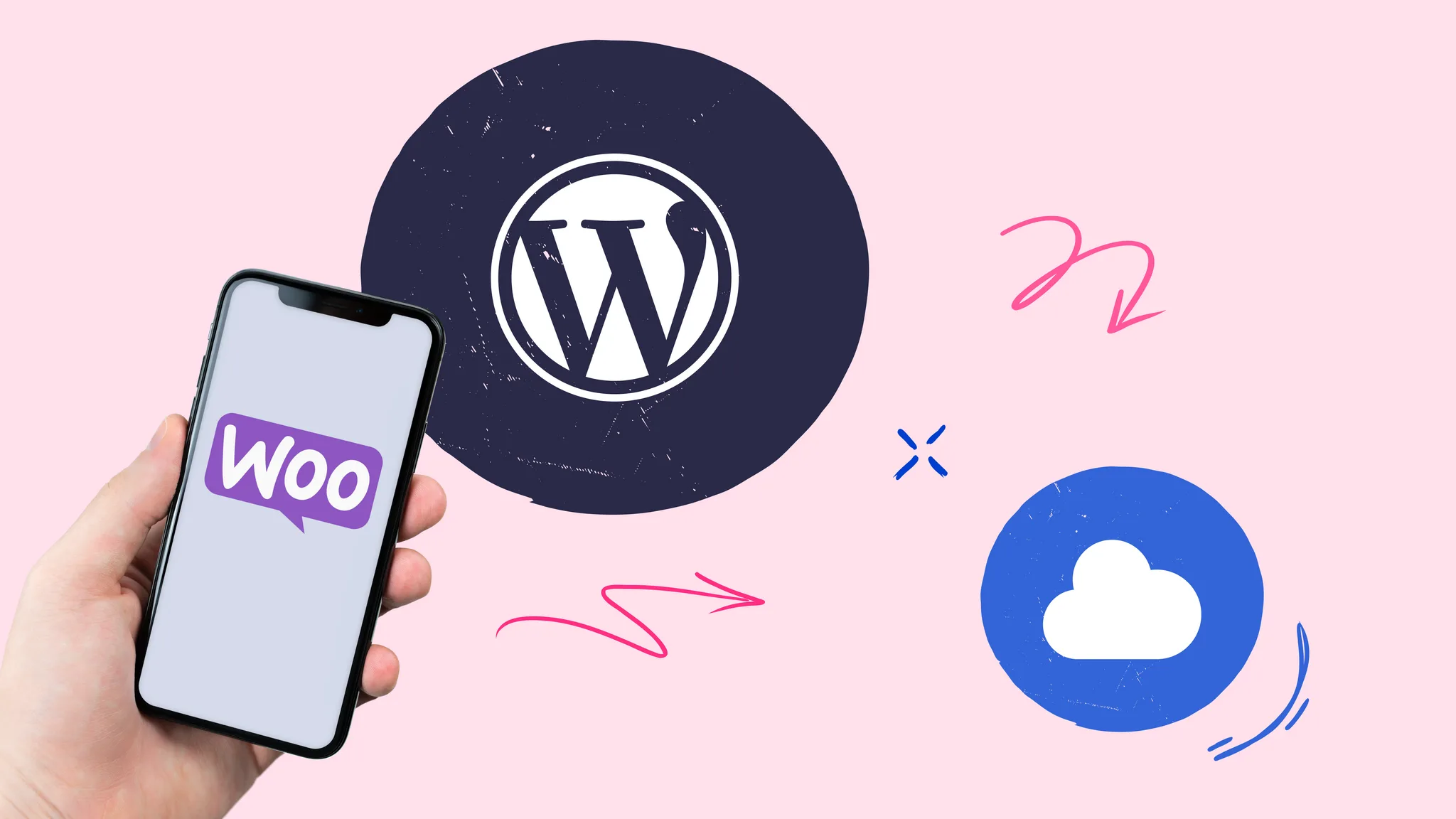Introduction
In today’s digital landscape, the speed at which a website loads plays a crucial role in retaining visitors and ensuring a positive user experience. For WordPress sites, this holds especially true, as a slow-loading site can result in frustrated users who are likely to abandon the page before it fully loads. Studies have shown that a mere second of delay in loading time can lead to significant drops in both traffic and conversions. Therefore, learning how to speed up WordPress site is essential for anyone looking to maintain a successful online presence.
Moreover, website speed is not just vital for user satisfaction; it also significantly impacts search engine optimization (SEO) rankings. Major search engines, including Google, consider site speed as one of the many factors when determining a site’s ranking in search results. A faster website will generally rank higher, making it more discoverable to potential visitors. Consequently, optimizing your WordPress site for improved speed can lead to better visibility in search results, ultimately increasing organic traffic.
In addition to user experience and SEO, a well-optimized Speed Up WordPress site can enhance conversion rates. Users are more likely to engage with content, complete purchases, or fill out contact forms if the website operates efficiently and loads quickly. This harmony between speed, user engagement, and conversion suggests that website owners should prioritize performance optimization as part of their overall strategy.
This blog post aims to guide you through five easy steps to increase the speed of your WordPress site. By applying these optimizations, you can enhance user experience, improve your site’s SEO rankings, and foster higher conversion rates. Whether you are a novice or an experienced developer, implementing these strategies will help ensure your WordPress site is both fast and efficient.
Table of Contents
Step 1: Choose a Reliable Hosting Provider
One of the most critical factors affecting the Speed Up WordPress site is the choice of your hosting provider. Good hosting can significantly boost loading times, enhance uptime, and ultimately contribute to a better user experience. When considering how to speed up WordPress site, it is essential to understand that not all hosting types are equal. Generally, there are several hosting options to consider: shared hosting, virtual private servers (VPS), dedicated servers, and managed WordPress hosting.
Shared hosting is the most affordable option, ideal for beginners or low-traffic websites. However, its limitations in resource allocation can result in slower load times as multiple websites share the same server. For those needing more resources, VPS hosting offers a better alternative by providing dedicated segments of a server, which can Speed Up WordPress and improve reliability. Ultimately, for high-traffic websites, dedicated hosting might be the best choice, granting the exclusive use of a server and the optimal speed necessary for a large number of visitors.
Managed WordPress hosting has gained popularity due to its focus on WordPress-specific needs. This option often includes features like caching, automatic backups, and enhanced security, which altogether contribute to both speed and ease of use. When exploring how to speed up WordPress site, opting for managed hosting can be a game-changer for performance, especially for those who prefer a hands-off approach with technical details.
Regardless of the hosting type you choose, it is crucial to select a reputable and reliable hosting provider. Look for providers that offer high uptime guarantees, fast server response times, and solid customer support. Some top recommendations include SiteGround, Bluehost, and WP Engine, known for Speed Up WordPress and improvement of reliability. By choosing the right hosting provider, you set a solid foundation for optimizing your WordPress site’s performance.

Step 2: Optimize Images and Media Files
One of the crucial steps on how to speed up WordPress site is to optimize images and other media files. Large image files can significantly slow down your website’s loading time, affecting the overall user experience. To mitigate this issue, it is essential to employ specific techniques and tools that compress images without sacrificing quality.
First and foremost, choosing the right file format is vital. Generally, JPEG is suitable for photographs due to its balanced quality and file size. On the other hand, PNG is preferred for images with transparency and text, as it maintains quality even after compression. For vector graphics, consider using SVG format, which is scalable without loss of quality and generally smaller in size.
Next, utilizing image optimization plugins can streamline the process of compressing your media files. Plugins like Smush, Imagify, or ShortPixel can effortlessly reduce file size while preserving visual quality. These tools often provide features such as bulk optimization, which allows for modifying multiple images at once, saving you significant time and effort.
In addition to these plugins, it is advisable to manually compress images before uploading them to your site. Online tools like TinyPNG or JPEGmini offer efficient compression without noticeable quality loss. Ensure that images are resized to the appropriate dimensions for their display on your site to avoid unnecessary loading times caused by oversized files.
Implementing responsive image techniques is also key. Using the srcset attribute in your HTML allows browsers to select the best image size based on the user’s device, ensuring quicker loading times for mobile users. By adopting these practices, you not only enhance the performance of your WordPress site but also improve the experience for your visitors, ultimately contributing to better engagement and retention.
Step 3: Use a Caching Plugin
Caching plays an essential role in enhancing the performance of WordPress sites, significantly contributing to how to speed up WordPress site. At its core, caching is a technique that stores a static version of your website’s content. This process reduces the need for the server to generate new pages every time a user visits your site, leading to faster load times and improved user experience.
When a visitor accesses your website, caching plugins serve previously stored static files instead of querying the database repeatedly. This dramatically decreases server load, and speed up WordPress page rendering, which is critical for retaining visitors and improving search engine ranking. Popular caching plugins that can help you implement this technique include W3 Total Cache, WP Super Cache, and LiteSpeed Cache. Each of these options provides a range of features tailored to optimize website performance.
Configuring your caching speed up WordPress plugin is crucial for achieving optimal results. After installing your chosen plugin, begin by enabling various caching methods provided, such as page caching, object caching, and browser caching. Additionally, be sure to configure any optimization settings that allow for minification of CSS and JavaScript files. This collectively contributes to reducing the size of the files that need to be loaded every time a page is accessed. It is also worth reviewing how each plugin interacts with your existing theme and other plugins to avert potential conflicts.
Ultimately, implementing a caching solution enhances the performance and loading speed up WordPress site significantly. By integrating caching, you not only alleviate server demand but also create a more seamless experience for your visitors, which is vital in the context of how to speed up WordPress site. As a result, adopting caching as a strategy is indispensable for any WordPress administrator aiming to improve their site’s efficiency and responsiveness.

Step 4: Minify CSS, JavaScript, and HTML
Minification is a crucial process to enhance the performance of a WordPress site by reducing the file sizes of CSS, JavaScript, and HTML files. By removing unnecessary characters such as whitespace, comments, and formatting, minification helps streamline the code. This reduction in file size leads to more efficient file transfers between the server and the user’s browser, thereby contributing to an overall speed up WordPress site. As you consider how to speed up WordPress site, minifying these files becomes an essential step for developers and site administrators alike.
Minified files load faster compared to their unminified counterparts, which directly impacts your page load times and user experience. A faster site not only pleases users but can also result in better SEO performance, as search engines like Google favor quick-loading pages. Given this significance, it’s important to incorporate minification into your website maintenance routine.
Several tools and plugins can facilitate the minification process, making it easier for users to implement this step without any technical expertise. Popular plugins such as Autoptimize, WP Rocket, and W3 Total Cache automatically handle the minification of CSS, JavaScript, and HTML files. These plugins often offer additional features such as combining files and deferring scripts, further enhancing loading speeds. By utilizing these resources, you can effectively reduce file sizes while ensuring your website retains its functionality.
By following this minification process, site owners can significantly reduce response times and improve overall performance. When considering how to speed up WordPress site, remember that small optimizations such as minifying crucial files can yield substantial benefits. The combination of smaller file sizes and faster loading speeds leads to a more efficient online experience for your visitors.
Step 5: Utilize a Content Delivery Network (CDN)
One effective method on how to speed up WordPress site is by utilizing a Content Delivery Network (CDN). A CDN is a network of distributed servers that ensures your website’s content is delivered to users from the closest geographical location. This reduces latency, significantly improving load times for users, particularly those who are located far from your web hosting server.
When a visitor accesses your website, the CDN serves your content (such as images, videos, and scripts) from the nearest data center, rather than sending the request all the way back to the origin server. This decentralized delivery system is particularly beneficial for global audiences, as it minimizes the time taken to retrieve and load content, thereby enhancing user experience. In studies, it has been shown that websites utilizing CDNs can experience an improvement in load time by up to 50%.
Additionally, using a CDN can provide improved site reliability and availability. During peak traffic periods or in the event of a traffic spike, a CDN can effectively handle excess demands by routing additional resources to the request. This alleviates pressure on your WordPress site, ultimately contributing to better performance and uptime metrics.
When integrated with WordPress, setting up a CDN is relatively straightforward. There are several popular CDN services available, including Cloudflare, Amazon CloudFront, and MaxCDN. These providers often offer user-friendly plugins that simplify the configuration process. For optimal results, choose a CDN that offers features tailored to your specific needs, such as advanced caching options or DDoS protection.
By implementing a CDN in your strategy on how to speed up WordPress site performance, you can enhance loading speeds significantly, improve user experience, and reduce the impact of high traffic on your website’s capabilities.
Bonus Tips for Ongoing Maintenance
Maintaining optimal speed up WordPress site goes beyond simply applying initial speed optimization techniques. To ensure that your website runs smoothly and efficiently over time, it is essential to adopt a maintenance routine that includes several key practices. One of the most effective ways to enhance the performance of your site is to regularly monitor its speed and performance metrics. Utilize tools such as Google PageSpeed Insights or GTmetrix to track loading times and identify potential bottlenecks. By keeping a close eye on these metrics, you can swiftly identify issues that might arise and affect your site’s speed.
Conducting regular audits of your website is another crucial practice. These audits can help you detect areas that require improvement. Pay particular attention to the size and performance of images, scripts, and plugins currently in use. It is advisable to review the plugins and themes actively installed on your WordPress site. Over time, some of these might become outdated or unnecessary, which can lead to slower performance. Ensure that you remove any redundant plugins and only retain those that deliver significant value to your site. This will not only help in reducing server requests but will also streamline your site’s functionality.
Another vital aspect of ongoing maintenance is keeping all your plugins and themes updated. Developers frequently release updates that include performance enhancements, security patches, and bug fixes. Regularly updating these elements will contribute greatly to your speed up WordPress site and security. Additionally, consider implementing a Content Delivery Network (CDN) as part of your ongoing strategy. A CDN can distribute your site’s static content across various geographical locations, thereby reducing load times for users regardless of their location.
By incorporating these ongoing maintenance strategies into your routine, you will be better equipped to maintain optimal speed up WordPress site, ensuring a reliable and efficient browsing experience for your users.

Measuring Your Site’s Speed Before and After
To effectively enhance your website performance, it is essential to measure your speed up WordPress site both before and after implementing optimization strategies. There are several reliable online tools that can help you gauge the loading time and overall performance of your WordPress site. Utilizing these tools allows you to track improvements and identify specific areas that require attention. Among the most recommended tools are Google PageSpeed Insights, GTmetrix, and Pingdom.
Google PageSpeed Insights provides a comprehensive analysis of your site’s performance on both mobile and desktop devices. Upon entering your URL, you will receive a score that reflects your speed up WordPress site along with valuable suggestions for improvement. The tool also generates a breakdown of your loading time and offers recommendations tailored to the unique requirements of your site. This information is invaluable for understanding how to speed up WordPress site effectively.
GTmetrix offers a detailed report that includes loading time, page size, and the number of requests made during the loading process. The platform ranks your site based on these metrics, allowing you to pinpoint specific components that may be impeding performance. Additionally, GTmetrix provides a historical trend feature that lets you track the effects of your optimizations over time, making it easy to measure how much progress you’ve made towards enhancing your site’s speed.
Pingdom is another robust solution for speed up WordPress measurement. It not only provides detailed performance metrics but also visualizes how your site loads, highlighting potential bottlenecks. After running a test, you will receive an overview of various loading elements, helping you to develop strategies for improvement.
By using these tools before and after your optimization efforts, you can accurately assess the impact of your changes, ensuring that your journey to understanding how to speed up WordPress site remains data-driven and effective.
Common Mistakes to Avoid
When considering how to speed up WordPress site performance, it is vital to identify and avoid common pitfalls that can hinder optimization efforts. One prevalent mistake is overloading a site with plugins. While plugins can enhance functionality, excessive use often leads to conflicting scripts and increased HTTP requests, which can dramatically slow down a website’s loading time. To mitigate this issue, it is advisable to regularly review and deactivate unused plugins, focusing only on those that are essential for your site’s functionality.
Another critical error is ignoring software upgrades. Developers routinely issue updates for WordPress core, themes, and plugins that not only improve functionality but often include performance enhancements and security fixes. Failing to implement these updates can leave your site vulnerable and sluggish. Hence, establishing a routine schedule for checking and applying updates is a prudent strategy to ensure optimal performance.
Neglecting mobile optimization is another factor that can significantly affect speed up WordPress site. With an increasing number of users accessing websites via mobile devices, it is crucial to implement responsive design practices. A site that is not mobile-friendly may take longer to load on smartphones and tablets, leading to higher bounce rates. Utilizing tools such as Google’s Mobile-Friendly Test can help identify areas where mobile experience can be optimized.
Lastly, ignoring image optimization can also adversely affect loading times. High-resolution images can consume substantial bandwidth, resulting in a slower site. Implementing image compression techniques, such as using formats like WebP and leveraging lazy loading functionalities, can drastically improve loading speed without compromising quality.
By being mindful of these common mistakes, you can efficiently maintain your WordPress site and significantly enhance its performance.
Conclusion
In closing, maintaining a fast WordPress site is crucial for both user experience and search engine optimization. A website that loads quickly can significantly reduce bounce rates, increase visitor engagement, and improve overall performance. The importance of speed cannot be overstated; therefore, implementing strategies such as optimizing images, utilizing caching plugins, minimizing HTTP requests, and leveraging content delivery networks can elevate your site’s responsiveness.
Throughout this blog post, we have detailed five effective steps to guide you on how to speed up WordPress site. By following these easy-to-implement measures, you can enhance your website’s performance and ensure that your visitors enjoy a seamless browsing experience. A faster site not only helps in retaining your audience but can also contribute positively to your search engine rankings, making it a worthwhile investment of your time and resources.
We encourage you to take action on these steps and start experiencing the benefits of a swift WordPress site. Speed optimizations can sometimes seem daunting, but with incremental changes, improvements become noticeable. If you have any additional tips or experiences regarding how to speed up WordPress site, we invite you to share them in the comments section below. Your insights could prove invaluable to other readers striving for a better-performing website.




